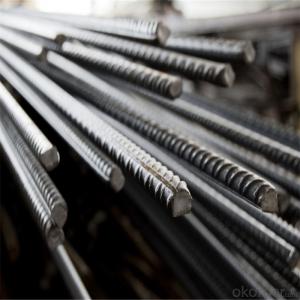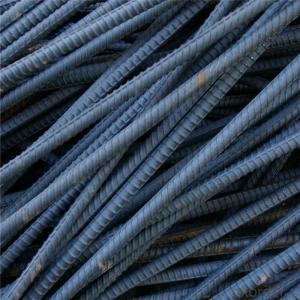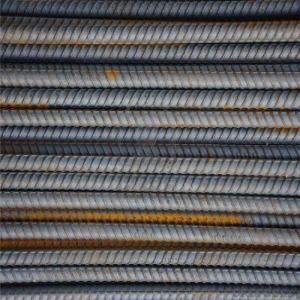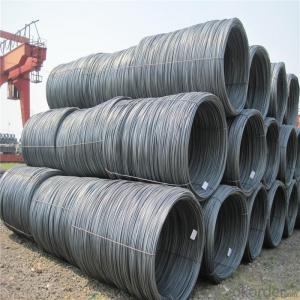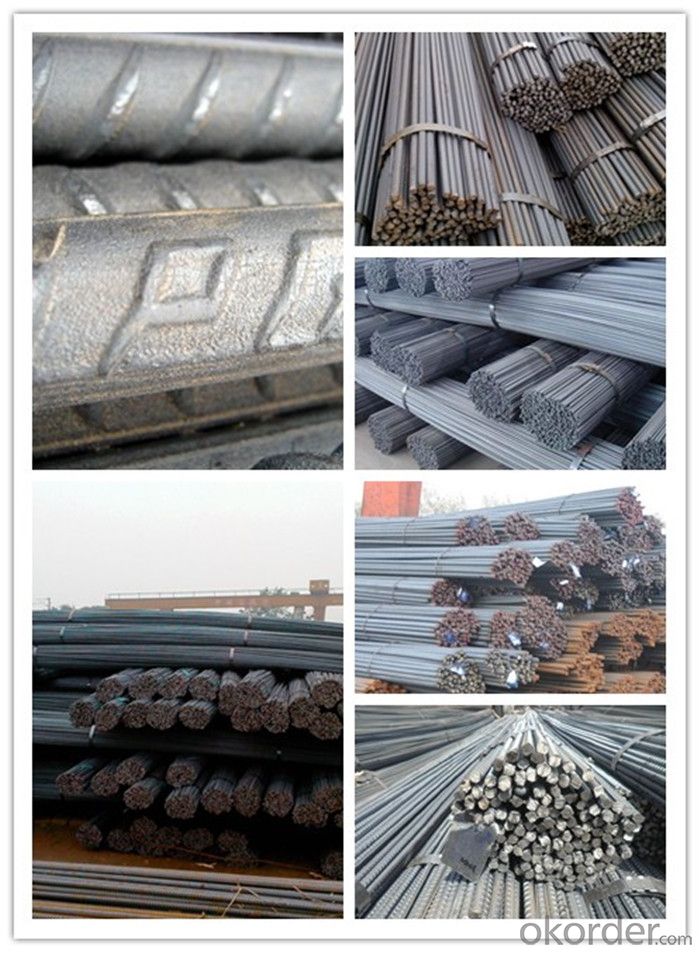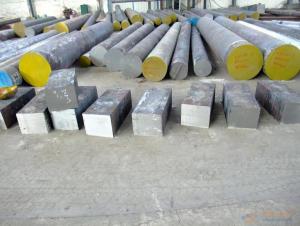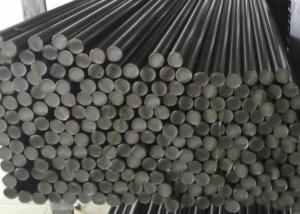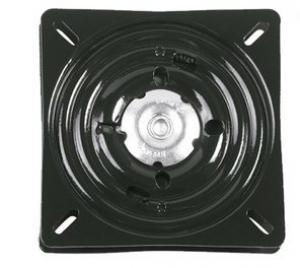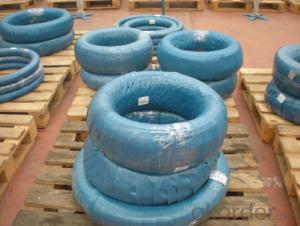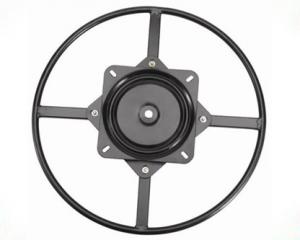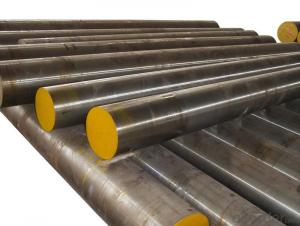16Mm Steel Rebar for Construction
- Loading Port:
- Tianjin
- Payment Terms:
- TT OR LC
- Min Order Qty:
- 150 m.t.
- Supply Capability:
- 400000 m.t./month
OKorder Service Pledge
OKorder Financial Service
You Might Also Like
Item specifice
16Mm Steel Rebar for Construction
Description of 16Mm Steel Rebar for Construction
1, Diameter: 5.5mm-10mm 16Mm Steel Rebar for Construction
10m- 40mm 16Mm Steel Rebar for Construction
2, Length: 6m, 9m, 12m or customized
3, Standard: GB, ASTM, AISI, SAE, DIN, JIS, EN
2, Produce Process: hot rolled or forged or cold rolled
3, Heat Treatment: annealing, normalizing, tempering, quenching
4, Surface Treatment: Black
5, Quality Assurance: We accept third party inspection for all orders.
Chemical Composition of 16Mm Steel Rebar for Construction
Grade | Technical data of the original chemical composition(%) | |||||
Reinforcing steel bar HRB335 | C | Mn | Si | S | P | B |
≤0.25 | ≤1.60 | ≤0.80 | ≤0.045 | ≤0.045 | >0.0008 | |
Physics Capability | ||||||
Yield Strength(N/cm2) | Tensile Strength(N/cm2) | Elongation(%) | ||||
≥ 335 | ≥490 | ≥16 | ||||
Reinforcing steel bar HRB400 | C | Mn | Si | S | P | B |
≤0.25 | ≤0.16 | ≤0.80 | ≤0.045 | ≤0.045 | 0.04-0.12 | |
Physics Capability | ||||||
Yield Strength(N/cm2) | Tensile Strength(N/cm2) | Elongation(%) | ||||
≥ 400 | ≥ 570 | ≥ 14 | ||||
Products Show of 16Mm Steel Rebar for Construction
Company Information
CNBM International Corporation is the most important trading platform of CNBM group.
Whith its advantages, CNBM International are mainly concentrate on Cement, Glass, Iron and Steel, Ceramics industries and devotes herself for supplying high qulity series of refractories as well as technical consultancies and logistics solutions.


F A Q
1, Your advantages?
professional products inquiry, products knowledge train (for agents), smooth goods delivery, excellent customer solution proposale
2, Test & Certificate?
SGS test is available, customer inspection before shipping is welcome, third party inspection is no problem
3, Factory or Trading Company?
CNBM is a trading company but we have so many protocol factories and CNBM works as a trading department of these factories. Also CNBM is the holding company of many factories.
4, Payment Terms?
30% TT as deposit and 70% before delivery.
Irrevocable L/C at sight.
5, Trading Terms?
EXW, FOB, CIF, FFR, CNF
6, After-sale Service?
CNBM provides the services and support you need for every step of our cooperation. We're the business partner you can trust.
For any problem, please kindly contact us at any your convenient time.
We'll reply you in our first priority within 24 hours.
- Q:How is special steel used in the production of springs?
- Special steel is used in the production of springs due to its high strength and durability. The unique properties of special steel allow springs to withstand heavy loads and retain their shape even under extreme conditions. This enables springs to function effectively in various applications such as automotive, aerospace, manufacturing, and more.
- Q:What are the properties of high-temperature alloy steel?
- High-temperature alloy steel possesses properties such as excellent heat resistance, high strength, good oxidation and corrosion resistance, and the ability to maintain mechanical properties at elevated temperatures. It is also known for its resistance to thermal fatigue, creep, and thermal shock, making it suitable for applications in high-temperature environments.
- Q:What are the challenges in machining special steel with high hardness?
- One of the major challenges in machining special steel with high hardness is the excessive tool wear. High hardness steel tends to be abrasive and causes rapid tool degradation, leading to frequent tool changes and increased production costs. Additionally, the high hardness makes it difficult to achieve precise cuts and maintain tight tolerances, affecting the overall quality of the machined parts. Another challenge is the generation of high cutting forces, which can strain the machine and potentially cause vibrations or distortions in the workpiece. Therefore, machining special steel with high hardness requires specialized tooling, advanced cutting strategies, and careful monitoring to overcome these challenges and achieve satisfactory results.
- Q:What are the advantages of using special steel?
- Special steel offers several advantages over regular steel. Firstly, it has superior strength and hardness, making it more durable and resistant to wear and tear. This makes it ideal for applications that require high strength and toughness, such as in the manufacturing of tools, machinery, and automotive parts. Additionally, special steel has excellent corrosion resistance, which helps prolong the lifespan of products exposed to harsh environments or corrosive substances. Moreover, it exhibits better heat resistance, allowing it to withstand high temperatures without losing its strength or shape, making it suitable for use in the aerospace and energy industries. Lastly, special steel can be customized to meet specific requirements, allowing manufacturers to create components with precise dimensions and properties, enhancing overall performance and efficiency.
- Q:How does special steel contribute to reducing product lead times?
- Special steel contributes to reducing product lead times by offering several advantages. Firstly, special steel is known for its high strength and durability, allowing manufacturers to produce parts that can withstand harsh conditions and heavy usage. This ensures that the products made with special steel have a longer lifespan, reducing the need for frequent repairs or replacements. Secondly, special steel can be fabricated into complex shapes and sizes, enabling manufacturers to produce intricate components with high precision. This eliminates the need for additional machining processes, saving time and reducing lead times. Lastly, special steel often has improved mechanical properties, such as higher hardness or heat resistance, which can enhance the performance of the final product. This allows manufacturers to meet specific requirements and deliver high-quality products more efficiently, ultimately reducing lead times.
- Q:What are the different carburizing techniques used for special steel?
- There are several carburizing techniques used for special steel, including gas carburizing, pack carburizing, liquid carburizing, and vacuum carburizing. Each technique involves introducing carbon into the surface of the steel to enhance its hardness and wear resistance. Gas carburizing involves heating the steel in a controlled atmosphere of carbon-rich gas, while pack carburizing entails surrounding the steel with a mixture of carbon-rich material and heating it. Liquid carburizing involves immersing the steel in a bath of molten salts or other carbon-rich liquid, and vacuum carburizing utilizes a low-pressure environment to introduce carbon into the steel's surface. These techniques are chosen based on the specific requirements of the steel and the desired end properties.
- Q:What are the requirements for special steel used in wind turbines?
- The reliability, efficiency, and durability of large-scale renewable energy systems, such as wind turbines, rely heavily on the crucial requirements for special steel. Here are some key considerations: 1. Strength and Durability: To withstand the harsh operating conditions, including strong winds, vibrations, and extreme temperature variations, wind turbine steel must possess exceptional strength and durability. Its high fatigue resistance allows it to endure cyclic loading over the turbine's operational life, which can span up to 20-25 years. 2. Corrosion Resistance: Wind turbines often face corrosive saltwater and salt-laden air in coastal or offshore environments. As a result, the special steel used must exhibit superb corrosion resistance to prevent degradation and ensure long-term performance. 3. Weldability: The steel chosen for wind turbines should be suitable for welding processes, enabling efficient fabrication and assembly of turbine components. Excellent weldability streamlines construction and maintenance, reducing downtime and associated costs. 4. Low Temperature Toughness: Wind turbines are frequently situated in cold regions, such as arctic or mountainous areas. Consequently, the special steel employed must possess good low-temperature toughness, ensuring its mechanical properties remain intact even in frigid climates. 5. Magnetic Properties: Wind turbines utilize electrical components like generators and transformers, which operate within electromagnetic fields. The special steel used in these components should possess specific magnetic properties to minimize energy losses and maximize electrical system efficiency. 6. Cost-effectiveness: While meeting all the aforementioned requirements, the special steel employed in wind turbines must also be cost-effective. Striking a balance between performance and cost ensures the economic viability of wind energy projects. Meeting these requirements is vital for the long-term operation and sustainability of wind turbines, enabling them to generate clean and renewable energy efficiently.
- Q:How does special steel perform in high-stress corrosion cracking environments?
- Special steel performs exceptionally well in high-stress corrosion cracking environments. Due to its unique composition and manufacturing process, special steel exhibits superior resistance to corrosion and cracking under high-stress conditions. This makes it an ideal choice for applications where reliability and durability are crucial, providing a long-lasting solution even in the harshest environments.
- Q:Can special steel be used in the telecommunications industry?
- Yes, special steel can be used in the telecommunications industry. Special steel, such as stainless steel or corrosion-resistant steel, can be utilized for various applications in telecommunications infrastructure, including tower structures, antenna components, cables, and connectors. These types of steel offer high strength, durability, and corrosion resistance, ensuring reliable and long-lasting performance in the telecommunications sector.
- Q:How does special steel respond to welding?
- Special steel, also known as alloy steel, exhibits unique properties that affect its response to welding. Unlike regular carbon steel, special steel contains additional alloying elements such as chromium, nickel, or molybdenum, which enhance its strength, corrosion resistance, and heat resistance. When it comes to welding, special steel generally responds well due to its high tensile strength and toughness. However, there are a few considerations to keep in mind. The high carbon content in some special steels can lead to cracking or brittleness during the welding process. To prevent this, preheating the material and using appropriate welding techniques are crucial. It is important to choose the right welding method based on the specific type of special steel being used. For instance, gas tungsten arc welding (GTAW) or tungsten inert gas (TIG) welding is commonly preferred for welding stainless steel, as it ensures excellent control over the heat input and produces high-quality welds with minimal distortion. Furthermore, special steel often requires the use of special welding consumables, such as electrodes or filler wires, specifically designed for the particular alloy composition. These consumables help maintain the desired mechanical properties and prevent the formation of brittle phases in the weld. Post-weld heat treatment is also essential for certain special steels, as it helps relieve residual stresses and improves the overall weldment's properties. This process can involve annealing, normalizing, or tempering, depending on the specific steel grade and application requirements. In conclusion, special steel responds well to welding, but it's essential to consider its alloy composition, carbon content, and specific welding techniques. By following proper welding procedures, using appropriate consumables, and applying necessary heat treatments, high-quality welds can be achieved, ensuring the integrity and performance of the special steel components.
1. Manufacturer Overview |
|
|---|---|
| Location | |
| Year Established | |
| Annual Output Value | |
| Main Markets | |
| Company Certifications | |
2. Manufacturer Certificates |
|
|---|---|
| a) Certification Name | |
| Range | |
| Reference | |
| Validity Period | |
3. Manufacturer Capability |
|
|---|---|
| a)Trade Capacity | |
| Nearest Port | |
| Export Percentage | |
| No.of Employees in Trade Department | |
| Language Spoken: | |
| b)Factory Information | |
| Factory Size: | |
| No. of Production Lines | |
| Contract Manufacturing | |
| Product Price Range | |
Send your message to us
16Mm Steel Rebar for Construction
- Loading Port:
- Tianjin
- Payment Terms:
- TT OR LC
- Min Order Qty:
- 150 m.t.
- Supply Capability:
- 400000 m.t./month
OKorder Service Pledge
OKorder Financial Service
Similar products
New products
Hot products
Related keywords
